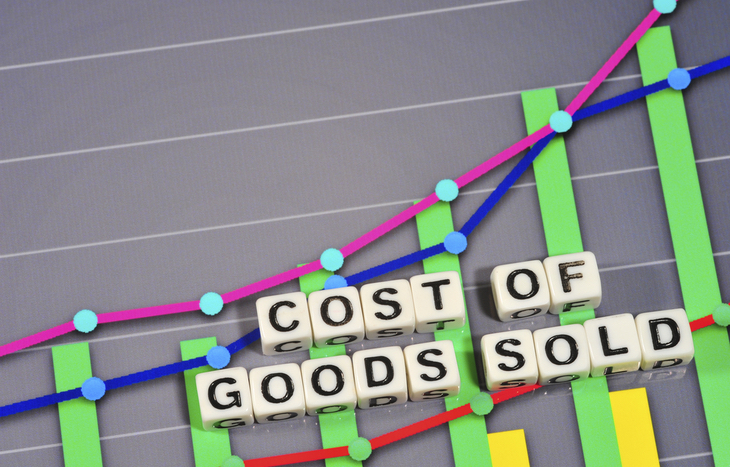What is the Cost of Goods Sold (COGS)?
Businesses seek to generate profit. To do this, they sell goods to bring in revenue. But revenue and profit aren’t the same. To get from one to the other, you need to factor in the cost of goods sold (COGS). COGS represent the amount of direct material, direct labor and overhead used to produce goods sold by a business. In short: the cost subtracted from sales revenue to get a gross profit figure.
COGS is sometimes referred to as “the cost of sales” because it represents the upfront investment needed to produce a saleable product. The important thing to remember is that it only represents direct costs and doesn’t account for peripherals. As such, COGS is an important metric for some measures of a business’ profitability, but not for others.
Here’s what businesses and investors need to know about COGS and why they’re an important costing figure to track.

How to Calculate COGS
As mentioned, COGS include only the direct costs to produce a saleable product. This is an important distinction because it excludes indirect costs involved in the actual selling. Labor costs, materials costs and other product-centric costs reflect COGS; the cost of warehousing, distribution and fulfillment don’t. The formula used to calculate COGS is:
Cost of Goods Sold = Beginning Inventory + Purchases – Ending Inventory
Cost of goods sold shows up on a company’s income statement. If COGS exceed revenue, it means the company is selling products at a loss. If revenue is higher than COGS, companies will subtract the latter from the former to get a gross revenue figure.
Calculating Inventory Value
Inventory values are central to calculating COGS. When it comes to determining inventory value, companies have three modes to choose from:
- First In, First Out (FIFO). The earliest goods made are the first goods sold. Costs increase over time, which means moving inventory quickly keeps costs lower—and by extension, COGS remain lower.
- Last In, First Out (LIFO). The latest goods made are the first goods sold. Goods with higher costs sell first, resulting in higher COGS. While this capitalizes on higher sales prices, it also results in decreased net income.
- Average Cost. The company uses the average cost of all goods to value inventory. This method evens out the discrepancies that can come with spikes and dips in COGS over time.
The ideal method for inventory accounting will change depending on the company’s circumstances. For example, if your costs constantly increase, FIFO is often the most accurate calculation for COGS. Conversely, LIFO can reduce tax liability by reducing net income.
What Does the Cost of Goods Sold Tell a Company?
Cost of goods sold tells a company how much they’re paying to produce a product. That paves the way for many other important metrics, including how much to sell it for across different pricing tiers. Understanding COGS also helps companies budget for materials and project forward-looking costs, such as recurring expenses for materials and labor.
On the sales side, understanding COGS can help a company estimate profitability a month or quarter ahead based on expected revenues. COGS can also tell a company if they’re pricing their product accordingly to generate the margin they expect to see.
Companies can even use COGS as an efficiency metric when compared against operating costs. Companies looking to drive top- or bottom-line growth can isolate COGS and operating costs, to find ways to either boost profitability or reduce expenses.
Gross Profit vs. Gross Profit Margin
COGS factor into two important profitability metrics: gross profit and gross profit margin. While they sound the same, there’s a subtle difference that’s important for companies to understand.
- Gross profit is simply revenue less COGS, which shows how much money a company makes selling its products. For example, if a Widget sells for $50 and its COGS represent $25, the company can expect to make a $25 profit on each Widget sold.
- Gross profit margin is the percentage of revenue that exceeds COGS. In the same example, if a Widget sells for $50 and has COGS of $25, the company’s gross profit margin is 50%.
The distinction is important because companies use these figures in different ways. Gross profit is useful for estimating profitability for an upcoming period; gross profit margin is a measure of the health of a company’s revenue stream.
Transparency in COGS is Vital
Generally Accepted Accounting Principles (GAAP) don’t offer much detail about COGS. As a result, they’re often left up to interpretation by the company. This opens the door for obfuscation and confusion.
For example, companies can inflate inventory numbers and underreport COGS to bolster profit margin. Or, they’ll fail to write-off outdated inventory, which can lower COGS by way of inflating beginning inventory. Overstating discounts and returns can also alter COGS. Whether on purpose or unknowingly, these actions change the measure of COGS and, by extension, metrics that rely on them, such as gross profit.
COGS Tell a Tale of Profitability
Ultimately, cost of goods sold (COGS) factors heavily into a company’s profitability. The difference between what a product costs to produce and what it sells for is of vital importance for companies—a cornerstone of capitalism. No matter how high COGS are, revenue needs to be higher.
To continue expanding your financial literacy, sign up for the Investment U e-letter below. Our daily newsletter provides investment education, tips and analysis from Wall Street experts and financial gurus.
COGS can tell a tale beyond profitability. It’s also a window into efficiency and operations, and how adept a company is at managing its revenue streams. Investors looking at the viability of companies or the health of their revenue streams will find COGS insightful and telling.
[adzerk-get-ad zone="245143" size="4"]




